Overview of Pothos
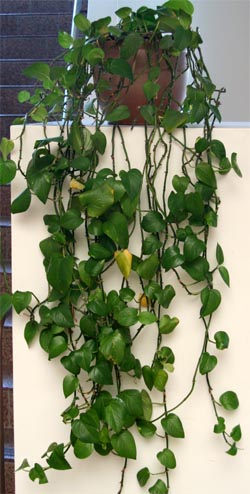
Pothos, also referred to as devil’s ivy, golden pothos, or hunter’s rove, is one of the most popular house plants in North America. The most widely used botanical name is Epipremnum aureum. In the past it has been classified under several different names including Pothos aureus, Rahphidophora aurea, R. pinnata, and Scindapsus aureus. This genus of about 15 species in the arum family (Araceae) occurs from Southeast Asia to the western Pacific. All are evergreen climbers with very different juvenile and mature foliage. In tropical regions pothos is grown as a ground cover or as a scrambler up trees. In our area it can be planted as an annual outdoors, such as in hanging baskets, but is most widely grown indoors as a potted plant with trailing vines, trimmed to stay more compact, or trained up to grow vertically on some type of support. It is very efficient at removing indoor pollutants such as formaldehyde, xylene, and benzene.
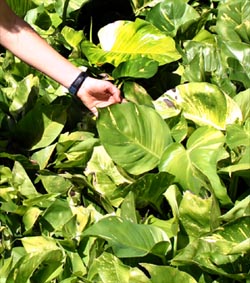
This evergreen root-climber has a slender twining and branching stem that grows up to 65 feet long. The glossy, heart-shaped, waxy leaves are bright green or are irregularly splotched or marbled with yellow or cream. The juvenile leaves are entire (smooth margins) and up to several inches long, while mature plants feature oval- to heart-shaped, pinnate leaves up to 3 feet long with holes along the midrib.

As a juvenile it forms modest terrestrial colonies but the leaves grow larger as they get higher in the canopy. Plants also produce adhesive aerial roots as they climb into the canopy, with clasping roots arising from nodes and internodes, and prolific feeding roots. The leaf stalks have a “knee” and sheathe the stem at the base. This species is only hardy in zones 10 to 12, so it is always grown as a houseplant or seasonal annual in the Midwest.
Pothos does not flower in cultivation, since only the juvenile phase is grown as a houseplant and flowering occurs only in the mature phase. Although considered rare, in the wild pothos can produce a number of erect flower stalks together, each with a cream spathe marked with purple surrounding the spadix.
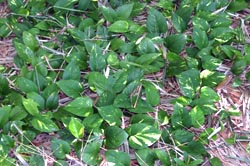
General Care of Pothos
Pothos is available from many retail sources in a variety of sizes from small starter plants to large hanging baskets. They are sometimes also offered growing on wood or foam poles in different container sizes.
Pothos is very easy to grow, so it makes an excellent choice for beginners to houseplants. It does best in filtered light, with high humidity, and temperatures between 70 and 90 °F but pothos will survive a wide range of environmental conditions. However, it does not tolerate much direct sunlight, and plants need to be kept out of drafts. Use a growing medium that is well aerated and allow plants to dry out slightly and be watered only when the soil surface is dry. Fertilize every other month, except during the winter when the plant is not actively growing. Older leaves will turn yellow and drop off naturally, eventually ending up with most of the leaves at the end of the vine. Selectively prune to keep vines a reasonable length and to promote new growth. Plants can be cut back to 2 inches from the soil line if necessary.
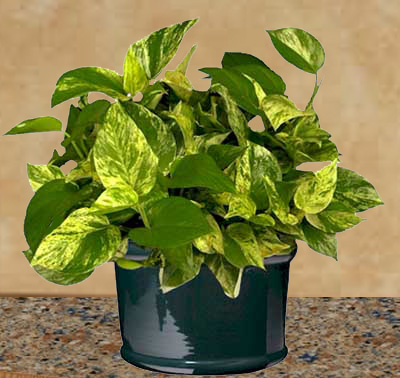
Pothos generally has few pest problems, but it is occasionally affected by certain insects or diseases. Root rots, with symptoms of brown or nonexistent roots, are most often due to overwatering. Blackening of the leaf margins or tips can be caused by overwatering, inadequate watering, or excess fertilizer (because of buildup of salts in the soil). Discoloration is often accompanied by leaves becoming yellow. The most common insect pests infesting pothos in homes are mealybugs and scale. Mealybugs appear as white, cottony masses, frequently in the leaf axils, on the lower surfaces of leaves and even on the roots. Scale looks like bark-colored bumps on the stems and leaves and are sometimes are difficult to distinguish from the plant material on which they are feeding. These pests may produce copious amounts of honeydew (many, but not all scales do), so the leaves and nearby surfaces may be sticky and sooty mold may develop. Infested plants become stunted and with severe infestations, plant parts begin to die. Pesticides may be used to control these insects, but often it is better to discard the plant and start over with clean plants or cuttings. Spider mites occasionally infest pothos and can easily be controlled with thorough cleaning and frequent applications of insecticidal soap.
Low light can result in loss of variegation. Low temperatures or abrupt change from very high temperatures to moderate temperatures can cause scattered brown patches, usually located in the center of the leaf, especially if plants are succulent and growing vigorously.
Pothos is toxic if ingested in large quantities because it contains calcium oxalate. This will cause burning in the mouth and the sap may also be irritating to the skin.
Propagating Pothos
Pothos is easily propagated from cuttings or by air-layering. The vines root in water or vermiculite within 3 to 4 weeks and buds can start to grow in 1 to 2 weeks under warm temperatures. It is best to plant several rooted cuttings together in a single pot.
Pothos Cultivars
There are several cultivars with various amounts of variegation, including:
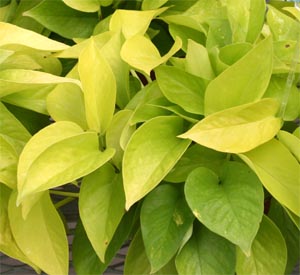
- Golden Pothos has golden, yellow-green variegated leaves.
- ‘Global Green’ is a patented (USPP 33,530) variety with green-on-green variegation. Typically, leaf margins are dark green with lighter green centers. Occasionally a few leaves may have streaks or patches of creamy white.
- ‘Jade’ is a solid dark green type which does well in low light areas.
- ‘Lemon Meringue’ is a patented (USPP 34,521) sport of ‘Global Green’ with medium green leaves with golden-yellow to light green edges (brighter yellow coloring develops in stronger light). As leaves mature, the yellow color fades to green, especially in lower light conditions.
- ‘Lime’ has bright yellow-green leaves.
- ‘Marble Queen’ has stems and moss green leaves streaked with white.
- ‘Neon’ has all yellow leaves.
- PEARLS AND JADE® (‘UFM12’) is a patented variety (USPP 21,217) from the University of Florida. It has green leaves with white and silvery-gray variegation, primarily on the edges of the foliage. The variegated sections of the foliage often have mottled green and silvery gray areas. It tends to be slower growing and has smaller leaves than most other varieties.
- ‘Tricolor’ the off-white stems and leaves are variegated with white.
– Susan Mahr, University of Wisconsin – Madison
Last Update: Bruce Spangenberg, UW-Madison Extension 2025



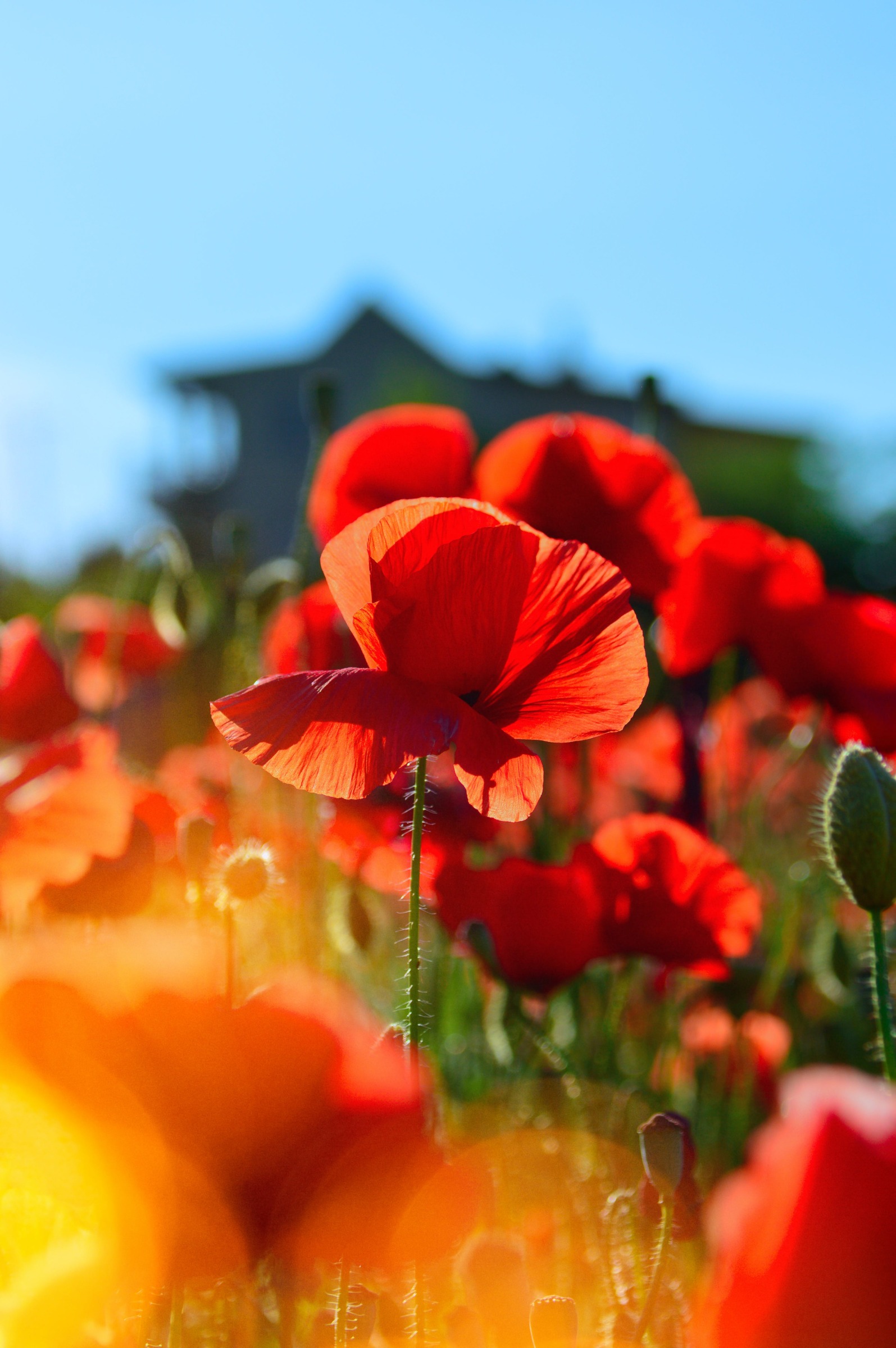
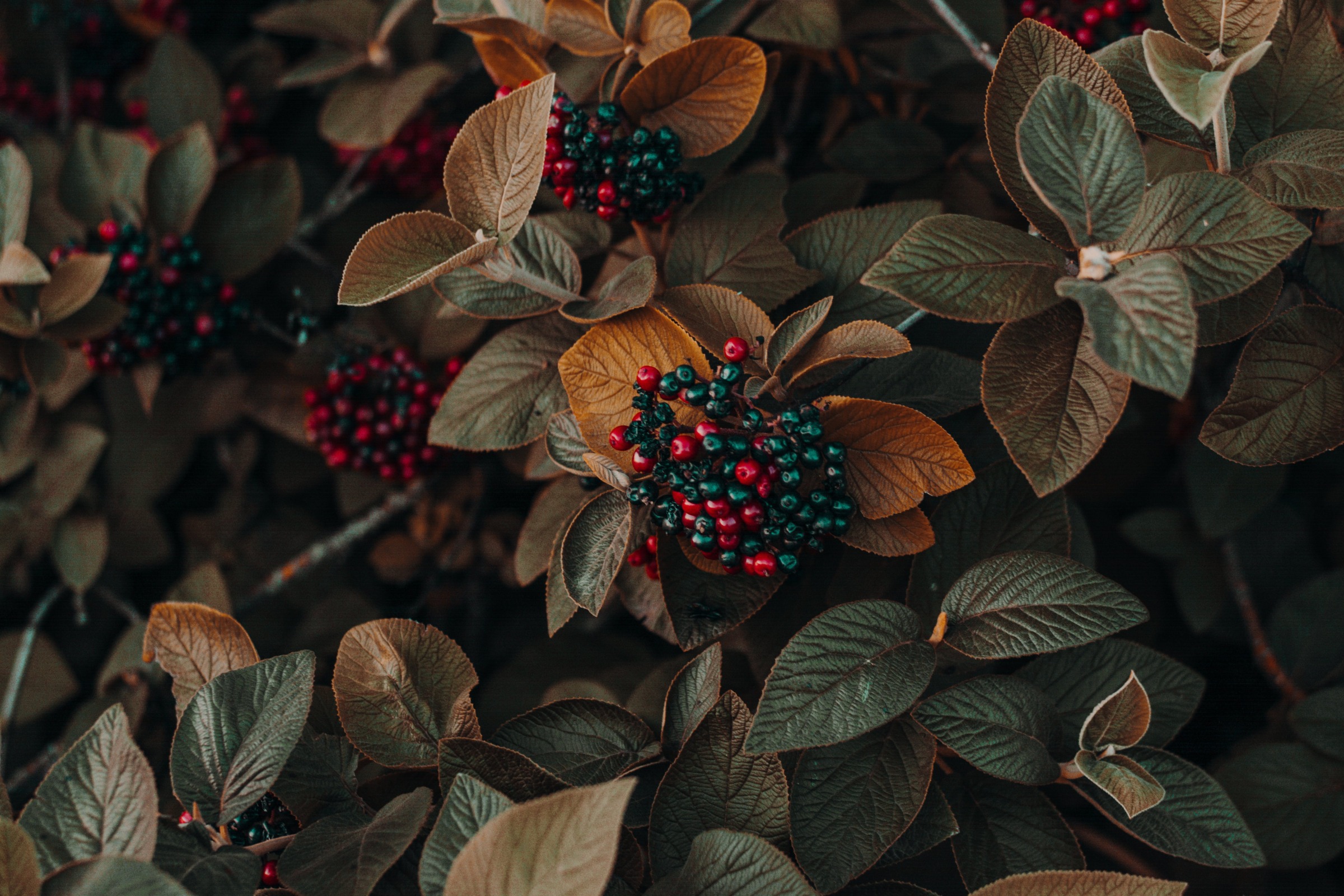
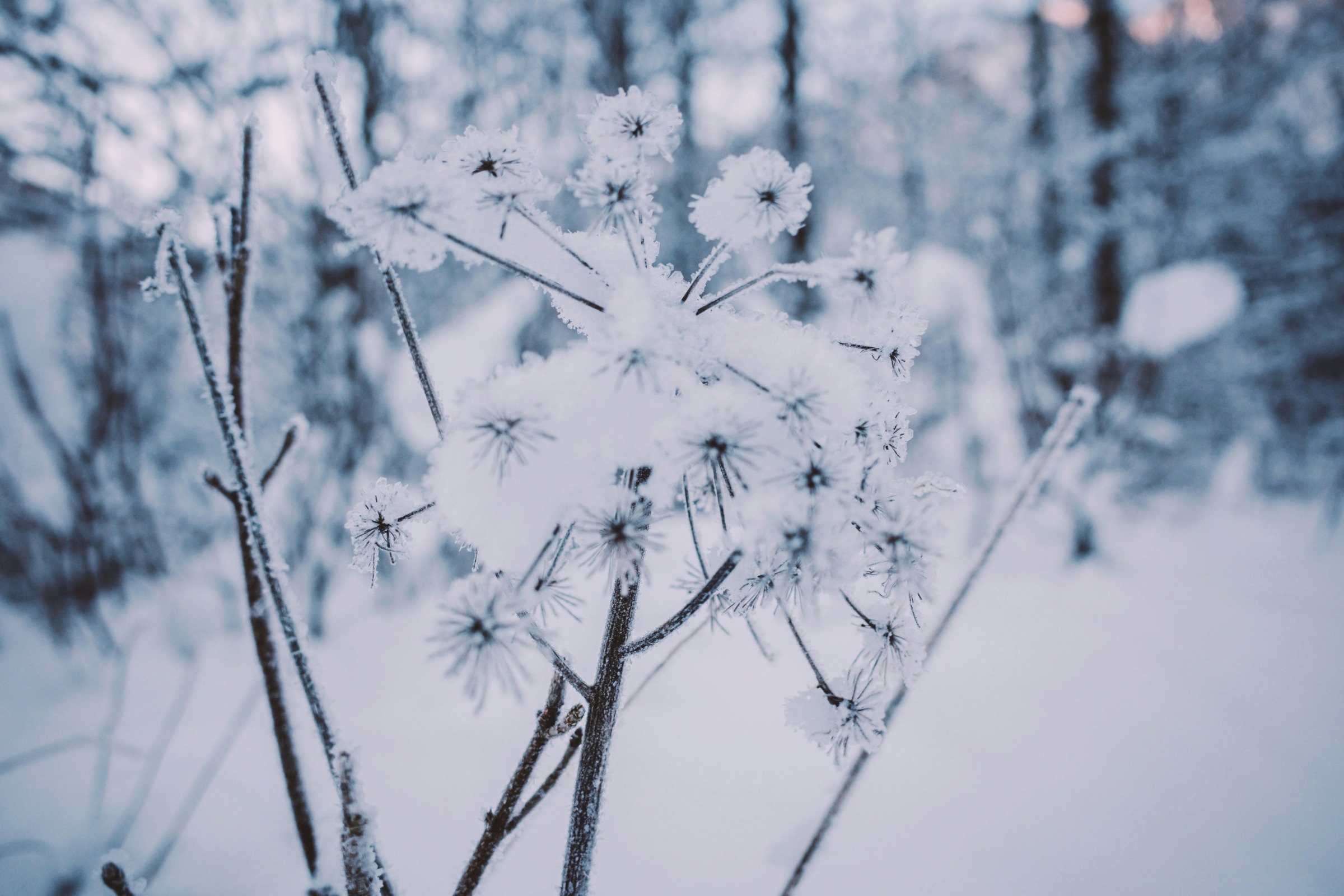
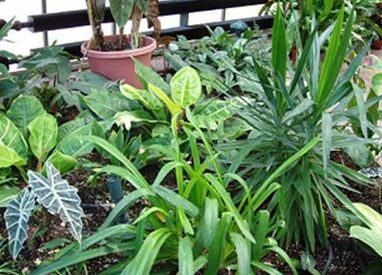 Houseplant Care
Houseplant Care ▶ Watch: Maintaining Your Festive Houseplants
▶ Watch: Maintaining Your Festive Houseplants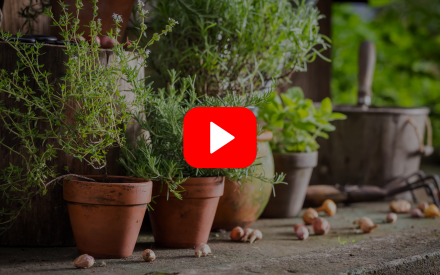 ▶ Watch: Bringing the Garden Inside
▶ Watch: Bringing the Garden Inside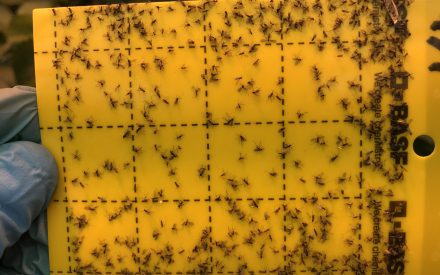 Fungus Gnats on Houseplants
Fungus Gnats on Houseplants


